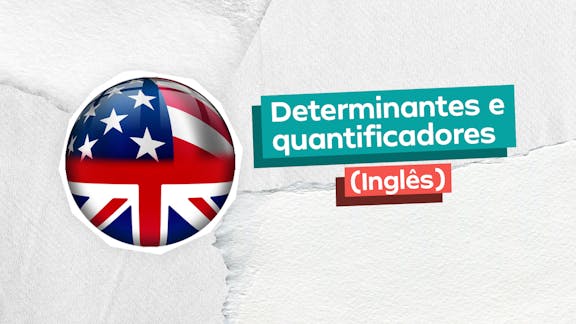O título “For cats, a big gulp with a touch of the tongue” resume como os gatos bebem água. Entretanto, o segredo dessa ação ocorre devido à
FOR CATS, A BIG GULP WITH A TOUCH OF THE TONGUE
It has taken four highly qualified engineers and a bunch of integral equations to figure it out, but we now know how cats drink. The answer is: very elegantly, and not at all the way you might suppose. Cats lap water so fast that the human eye cannot follow what is happening, which is why the trick had apparently escaped attention until now. With the use of high-speed photography, the neatness of the feline solution has been captured. The act of drinking may seem like no big deal for anyone who can fully close his mouth to create suction, as people can. But the various species that cannot do so - and that includes most adult carnivores - must resort to some other mechanism. Dog owners are familiar with the unseemly lapping noises that ensue when their thirsty pet meets a bowl of water. The dog is thrusting its tongue into the water, forming a crude cup with it and hauling the liquid back into the muzzle.
Cats, both big and little, are so much classier, according to new research by Pedro M. Reis and Roman Stocker of the Massachusetts Institute of Technology, joined by Sunghwan Jung of the Virginia Polytechnic Institute and Jeffrey M. Aristoff of Princeton. Writing in the Thursday issue of Science, the four engineers report that the cat’s lapping method depends on its instinctive ability to calculate the balance between opposing gravitational and inertial forces. What happens is that the cat darts its tongue, curving the upper side downward so that the tip lightly touches the surface of the water.
The tongue is then pulled upward at high speed, drawing a column of water behind it. Just at the moment that gravity finally overcomes the rush of the water and starts to pull the column down - snap! The cat’s jaws have closed over the jet of water and swallowed it. The cat laps four times a second - too fast for the human eye to see anything but a blur - and its tongue moves at a speed of one meter per second. Being engineers, the cat-lapping team next tested its findings with a machine that mimicked a cat’s tongue, using a glass disk at the end of a piston to serve as the tip. After calculating things like the Froude number and the aspect ratio, they were able to figure out how fast a cat should lap to get the greatest amount of water into its mouth. The cats, it turns out, were way ahead of them - they lap at just that speed. To the scientific mind, the next obvious question is whether bigger cats should lap at different speeds.
WADE, Nicholas. For cats, a big gulp with a touch of the tongue. Disponível em: Acesso em: 20 nov. 2010.
It has taken four highly qualified engineers and a bunch of integral equations to figure it out, but we now know how cats drink. The answer is: very elegantly, and not at all the way you might suppose. Cats lap water so fast that the human eye cannot follow what is happening, which is why the trick had apparently escaped attention until now. With the use of high-speed photography, the neatness of the feline solution has been captured. The act of drinking may seem like no big deal for anyone who can fully close his mouth to create suction, as people can. But the various species that cannot do so - and that includes most adult carnivores - must resort to some other mechanism. Dog owners are familiar with the unseemly lapping noises that ensue when their thirsty pet meets a bowl of water. The dog is thrusting its tongue into the water, forming a crude cup with it and hauling the liquid back into the muzzle.
Cats, both big and little, are so much classier, according to new research by Pedro M. Reis and Roman Stocker of the Massachusetts Institute of Technology, joined by Sunghwan Jung of the Virginia Polytechnic Institute and Jeffrey M. Aristoff of Princeton. Writing in the Thursday issue of Science, the four engineers report that the cat’s lapping method depends on its instinctive ability to calculate the balance between opposing gravitational and inertial forces. What happens is that the cat darts its tongue, curving the upper side downward so that the tip lightly touches the surface of the water.
The tongue is then pulled upward at high speed, drawing a column of water behind it. Just at the moment that gravity finally overcomes the rush of the water and starts to pull the column down - snap! The cat’s jaws have closed over the jet of water and swallowed it. The cat laps four times a second - too fast for the human eye to see anything but a blur - and its tongue moves at a speed of one meter per second. Being engineers, the cat-lapping team next tested its findings with a machine that mimicked a cat’s tongue, using a glass disk at the end of a piston to serve as the tip. After calculating things like the Froude number and the aspect ratio, they were able to figure out how fast a cat should lap to get the greatest amount of water into its mouth. The cats, it turns out, were way ahead of them - they lap at just that speed. To the scientific mind, the next obvious question is whether bigger cats should lap at different speeds.
WADE, Nicholas. For cats, a big gulp with a touch of the tongue. Disponível em:
Gabarito comentado
Alternativa correta: D
Tema central: identificar a ideia principal do trecho: qual é o “segredo” do modo como os gatos bebem. A questão exige leitura seletiva — localizar a sentença que sintetiza o argumento do autor e interpretá‑la.
Resumo teórico rápido: em interpretação textual, a ideia principal costuma vir em frases que exprimem causa/efeito ou que usam verbos como “depend”/“depende”, “show”/“mostram”. Procure frases que conectem explicação e conclusão. Aqui, o texto afirma explicitamente a razão do comportamento (capacidade instintiva de calcular o equilíbrio entre forças).
Justificativa da alternativa D: o próprio texto afirma que “the cat’s lapping method depends on its instinctive ability to calculate the balance between opposing gravitational and inertial forces.” Essa frase é praticamente a resposta literal do enunciado: o segredo é essa habilidade instintiva de calcular o equilíbrio entre forças opostas. Portanto D sintetiza corretamente a ideia-central.
Análise das alternativas incorretas:
A — fala em “calcular a captação de água usando a língua no ar”. Isso deturpa: o texto não diz “captação” nem enfatiza “no ar”; enfatiza o equilíbrio entre forças (gravitacional e inercial), não essa formulação vaga.
B — “alta velocidade” é um detalhe verdadeiro (o texto menciona velocidade e frequência), mas é um aspecto, não o segredo explicado; a questão pede a razão que explica o sucesso do método, não apenas uma característica.
C — “postura clássica e elegante” é comentário de estilo do autor (infra‑texto), não explicação científica do mecanismo; portanto não responde ao “porquê”.
E — “calcular a quantidade de água sobre a língua” altera o foco: o texto descreve cálculo do equilíbrio de forças para formar e aproveitar a coluna de água, não a mensuração direta da quantidade retida.
Dica prática para provas: busque frases com verbos de ligação e expressão de causa; sublinhe sentenças que explicam “por que” ou “como” — quase sempre contêm a ideia principal.
Fontes: Reis et al. (estudo citado em Science) e a matéria do NYTimes que resume a pesquisa.
Gostou do comentário? Deixe sua avaliação aqui embaixo!






